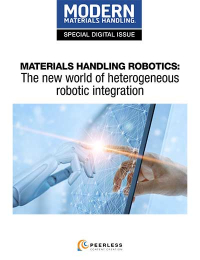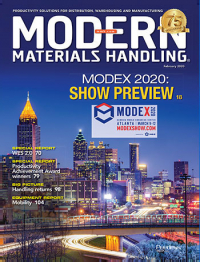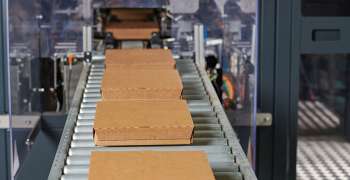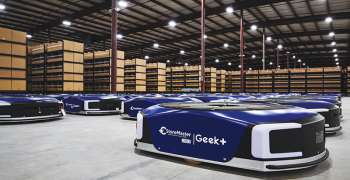Lift tables perform where previous equipment fell short
Manufacturer with harsh conditions upgrades equipment to eliminate costly ongoing maintenance and repairs.
Lift tables at M+A Matting’s commercial floor mat manufacturing facility in LaGrange, Ga., must hold up to punishing manufacturing demands. When managers decided the equipment was not durable enough, the company installed new lift tables (Kelley) that slashed maintenance costs while improving productivity.
To cure raw rubber material, employees lay pre-cut rubber sheets stacked up on pallets inside 12 large 1,500-pound metal tray frames. One tray rests on ball-bearing rollers inside each tray frame, which then sits on each lift table at 32 inches above the floor. The tray frames and lift tables are positioned directly in front of tall rubber curing ovens that feature four narrow horizontal openings at different heights. Each lift table elevates the tray frame containing its tray with rubber sheets to the right opening on the adjacent oven. The oven then automatically pulls the tray along with its rubber sheets directly into the oven.
According to M+A Matting maintenance supervisor Kenneth Whatley, the previous lift tables’ pins, bearings, bushings, rollers and frames were wearing out and falling apart. The new, more durable lift tables feature a 5-horsepower continuous duty motor that produces a 26-second raise/lower time. Each 48- x 102-inch table has an 8,000-pound capacity, stands 12 inches in its lowest position and 71 inches at its highest position.
For employee safety, the lift tables include velocity fuses on all cylinders to prevent uncontrolled descent. M+A Matting also uses either a light curtain or rubber bump guard switch around the table’s perimeter to stop the lift when an employee or other obstruction triggers them.
Employees use a touchscreen to raise and lower the lift tables. When a table reaches the correct height, a button lights up on the screen indicating the lift should stop at a specific oven opening.
“Each lift’s 26-second raise/lower time impacts our productivity and efficiency, and its travel speed is slow enough that employees don’t overshoot the designated oven opening,” says Whatley, who adds that he likes the way the new lifts are built. “The replacement lifts are very beefy, dependable and we haven’t had any problems with them in the 13 years they’ve been in operation.”

Article Topics
Ergonomics News & Resources
Advance Lifts marks 50th anniversary Shift Robotics demonstrates warehouse Moonwalkers HeroWear demonstrates a back-assist exosuit SIGI announces key leadership promotions Autoquip Corporation acquires German company J.A. Becker & Söhne Monorail Manufacturers Association celebrates 90 years of monorail best practices Caster Concepts expands manufacturing facility in Albion, Mich. More ErgonomicsLatest in Materials Handling
Beckhoff USA opens new office in Austin, Texas Manhattan Associates selects TeamViewer as partner for warehouse vision picking ASME Foundation wins grant for technical workforce development The (Not So) Secret Weapons: How Key Cabinets and Asset Management Lockers Are Changing Supply Chain Operations MODEX C-Suite Interview with Harold Vanasse: The perfect blend of automation and sustainability Consultant and industry leader John M. Hill passes on at age 86 Registration open for Pack Expo International 2024 More Materials HandlingAbout the Author
Subscribe to Materials Handling Magazine

Find out what the world's most innovative companies are doing to improve productivity in their plants and distribution centers.
Start your FREE subscription today.
April 2024 Modern Materials Handling
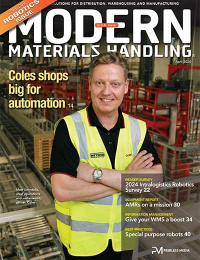
Latest Resources
